INDONESIA: Significance of Batak House in Indonesian culture! The Lake Toba region on the island of Sumatra in Indonesia is not just renowned for its aesthetic beauty but is also home to many cultural treasures. One such cultural icon of the region is the Traditional Batak House or Batak Toba House.
A visit to this unique-looking traditional house provides a surreal experience. At first sight, the traditional Batak House (also known as ‘Jabu’ or ‘rumah bolon’) evoked an unreal sense of an unearthly feeling, which immediately raised the question, “Can this be real, or is it an alien structure?”
The Lake Toba region and Samosir Island are dotted with these unique-looking structures, many of which are uninhabited and converted to showpieces.
The Batak house, which is a distinct symbol of the Batak people, is also a true reflection of their life philosophy and mythology. Historians aver that the early Bataks may have been influenced by Hinduism in some ways about the arrangement of life in the universe. Bataks are innately spiritual people like many in India. This seems to be reflected in their building style too.
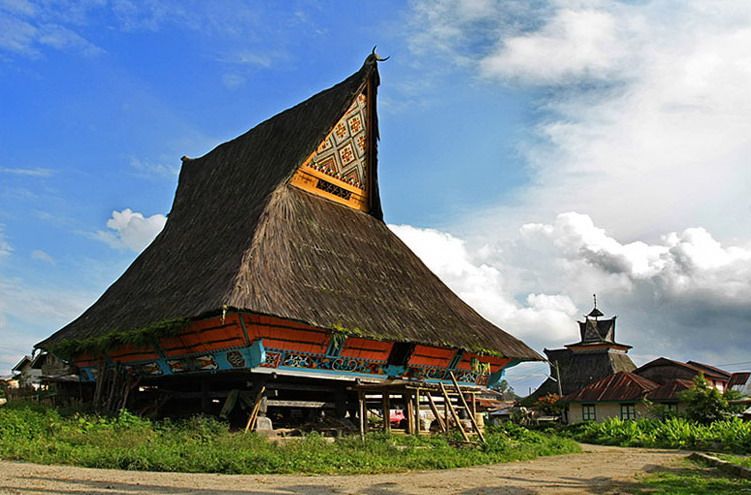
The Batak house is a wooden construct made out of a special sugar palm fibre. Most distinctive in Indonesia, it has a large roof which is shaped like a saddle. This unique shape forms a shallow pass between two sharp jugged peaks.
The similarly shaped houses made of corrugated iron, possibly indicating a shortage of special palm fibre. The main structure is usually a rectangular formation that is firmly anchored on flat stones by large impressive wooden pillars.
The curator of the Tomok village explained to that the wooden stilts shielded residents from humidity and wild animals in olden times. The entrance of the structure is supported by two or more wooden rows of pillars, which are interconnected by planks inserted in between, providing overall stability. A natural enclosure is formed in between where livestock were housed in those days.
A unique aspect of the traditional house is that it is constructed almost entirely without nails and stands anywhere between 40 to 60 feet in height. It has no doors or windows. It can only be entered using a ladder via a trapdoor through a raised floor or stilts. And no windows!
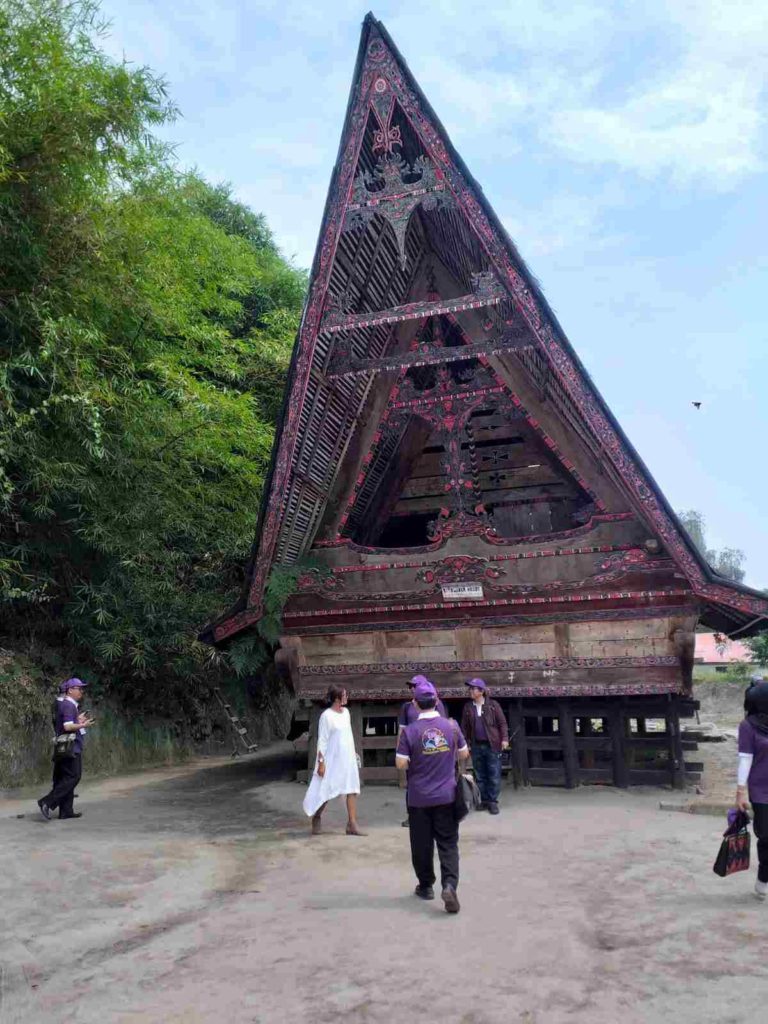
The traditional Batak house typically has three levels, presumably corresponding to three levels of the universe – upper, middle and lower worlds. The top level represents the upper world which is the realm of the gods. The middle level (elevated above the ground on pillars) is where the humans used to dwell. The lower level was allocated for livestock.
Another exciting aspect of the house is that the height of the door entrance was quite low. A guest would have to bow low before entering, which was seen to be an automatic sign of deference to the owner. Similarly, the stairs are built in such a way that the guest has to lower the body to move upwards. Such features were reminiscent of courtyard houses found in interior Tamil Nadu in South India.
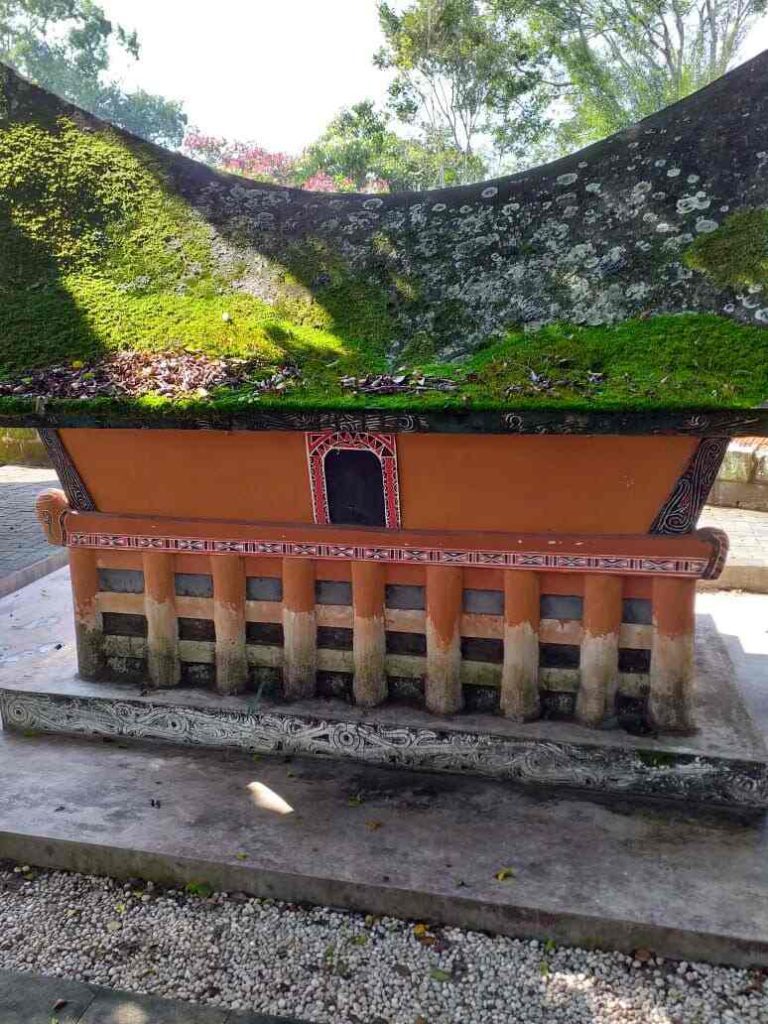
The Batak Toba society believed in ‘Hamoraon’, ‘Hagabeon’ and ‘Hasangapon’, a three-point philosophy, meaning riches or abundance, fertility and honour or social prestige. In the making of a Batak House, a harmony of these principles of philosophy was achieved by the use of decorative motifs and animal carving heads.
Such decorative pieces of carvings of animals and birds are positioned at the ends of side beams for protection and fertility. The head of a large water buffalo head usually stares down from the roof, an indication that the buffalo head is blessing visitors with good things in life.
The Batak House is perhaps their most vivid articulation of the harmony of God, man and the cosmos. It also reflects their belief in some kind of animism.
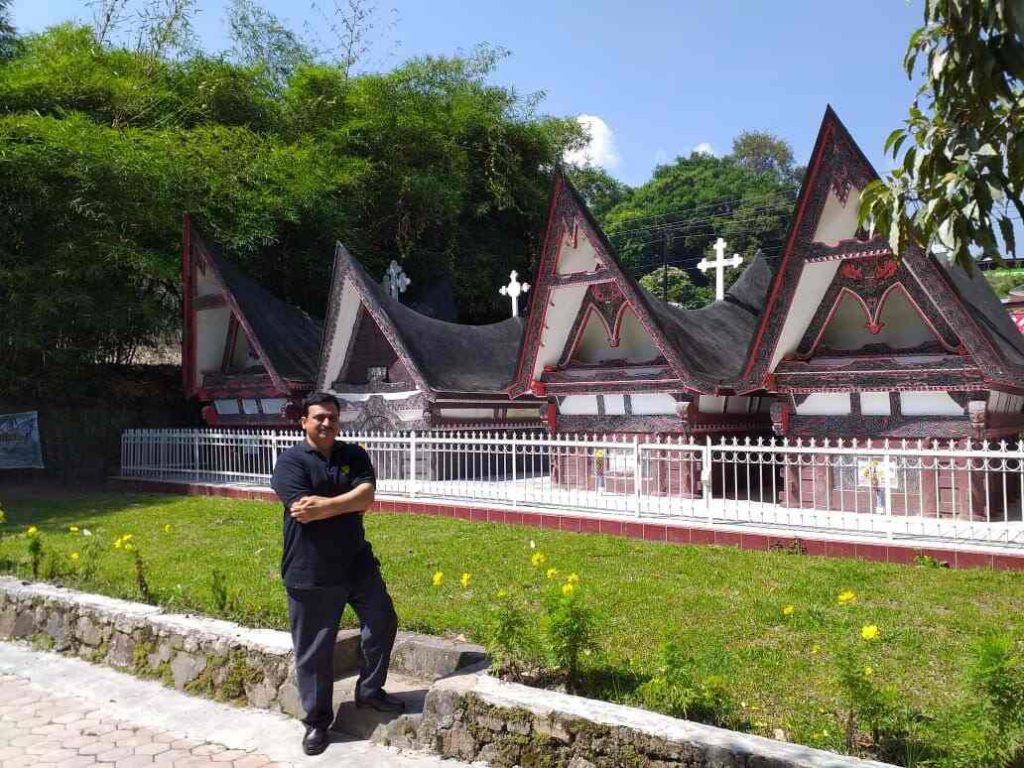
Even the graves were housed in Batak-style cemeteries. Though just about 15% of residents of Lake Toba and adjoining regions still practice communal living in a traditional Batak House, the onset of modernity has rendered most traditional old houses in a poor state of repair and largely abandoned. In one such traditional village, some of the houses were rehabilitated for tourism purposes.
The Tom Tom Village in Samosir is a famous tourist attraction, where a cluster of authentic traditional Batak houses can be seen. The traditional Tor Tor dance, performed regularly in a large courtyard for the tourists, was an authentic experience that reflected the way of life of the Batak people.
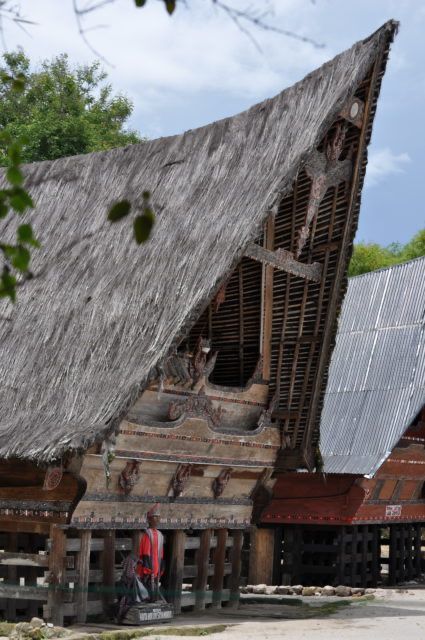
Samosir Island, where the Batak culture flourishes, attracts hordes of global and local tourists. The picturesque island offers beautifully carved wooden Batak souvenirs and unique textile items called Uloos, which are prized by tourists.
Also Read: Indonesia’s Java Island Escapes 6.4-Magnitude Earthquake with Minimal Loss of Life and Damage

